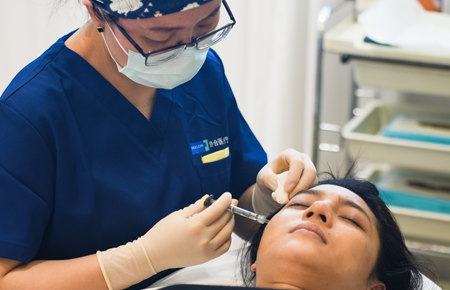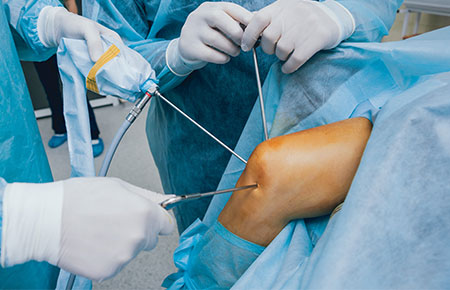As we all know, the root cause of aging is the loss of collagen! At the age of 20, various phenomena of skin aging have begun to accumulate, and we need to wait until the age of 30 to 40 for these phenomena to be "observed". It is urgent to prevent aging.

The role of collagen in the skin
Collagen and elastic fibers work together to form a network of supports, just like the steel structure that supports skin tissue. Sufficient collagen can make skin cells plump, make the skin hydrated, delicate, and smooth, stretch fine lines and wrinkles, and effectively prevent skin aging.
Why is collagen lost?
There are many reasons for collagen loss, such as aging, ultraviolet damage, environmental deterioration, irregular work and rest, etc. In addition to the irresistible factor of aging, the major cause of collagen loss is ultraviolet damage, because ultraviolet rays can activate melanin and eat away at collagen.
Effects of Collagen Loss
The loss of collagen will first cause the skin to lose moisture. Wrinkles will appear when the skin is dehydrated. The skin will also lose elasticity, and become sagging, and pores will enlarge. In addition, after collagen is swallowed up by melanin if the activated melanin cannot be discharged in time, it will also cause problems such as spots, uneven skin tone, or dullness.
How to stimulate collagen regeneration
PLLA can be injected to stimulate the skin to produce collagen
PLLA is an important biodegradable polymer material. Its characteristics are non-toxic, non-irritating, biodegradable and absorbable, high strength, good plasticity, and easy to process and form. The degradation cycle is 2 to 12 months.
In the medical aesthetics industry, the applications of PLLA (poly-L-lactic acid) include:
• Injectable fillers: PLLA is used as an injectable filler and is often referred to as “child facial injections” or “beauty injections.” It fills in wrinkled, dimpled, or sagging areas of skin, restoring the skin's fullness and elasticity.
• Skin regeneration treatment: PLLA can be used as part of a skin regeneration treatment to improve skin texture, increase skin firmness and elasticity, and reduce fine lines and wrinkles.
• Soft tissue reconstruction: PLLA is used in soft tissue reconstruction to repair facial tissue damage or defects, such as improving facial contours, filling in the malar area, etc.
• Adjunct to skin laser treatment: PLLA can be used in conjunction with skin laser treatment to accelerate the skin healing process and improve treatment effects.
In general, the application of PLLA in the medical beauty industry covers many aspects, aiming to improve the appearance and texture of the skin and achieve young, healthy skin.
Singsumile Poly-L-Lactic Acid Filler For Injection
It is intended for deep dermal injection to correct moderate to severe nasolabial wrinkles and facial wrinkles. The treatment is ideal for consumers 30+ who are concerned with skin aging, dermal deficiencies, laxity, and areas prone to volume loss, such as the cheeks, temples, nasolabial, and marionette lines.
Core Ingredients: PLLA, Mannitol, Sodium carboxymethyl cellulose.
Advantages
• Ideal for consumers aged 30+.
• Regenerative: stimulates collagen production to help volumize and smooth.
• Long-lasting: effect lasts for 18-24 months.
• Safe: biocompatible and can be degraded and metabolized out of the body

-
singclean | 2024-02-07
 Mechanism of Delayed Redness and Swelling after Hyaluronic Acid Injection and Related Influencing FactorsIn recent years, hyaluronic acid injection has been favored in the field of medical beauty, but the problem of delayed redness and swelling after injection has also attracted widespread attention. Today, let's take a deeper look at the mechanism of delayed redness and swelling caused by hyaluronic acid injection and related influencing factors.
Mechanism of Delayed Redness and Swelling after Hyaluronic Acid Injection and Related Influencing FactorsIn recent years, hyaluronic acid injection has been favored in the field of medical beauty, but the problem of delayed redness and swelling after injection has also attracted widespread attention. Today, let's take a deeper look at the mechanism of delayed redness and swelling caused by hyaluronic acid injection and related influencing factors. -
singclean | 2024-02-07
 Tips For Lip Injection By Using Hyaluronic Acid
Tips For Lip Injection By Using Hyaluronic Acid -
singclean | 2024-02-07
 The Prevention and Treatment of OsteoarthritisOsteoarthritis is a chronic disease primarily caused by damage and wear and tear to joint cartilage, resulting in joint pain, stiffness, and limited function.
The Prevention and Treatment of OsteoarthritisOsteoarthritis is a chronic disease primarily caused by damage and wear and tear to joint cartilage, resulting in joint pain, stiffness, and limited function.




